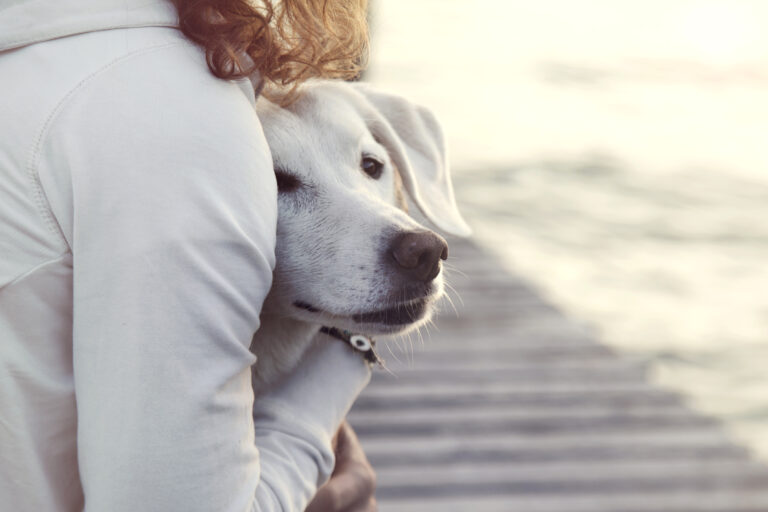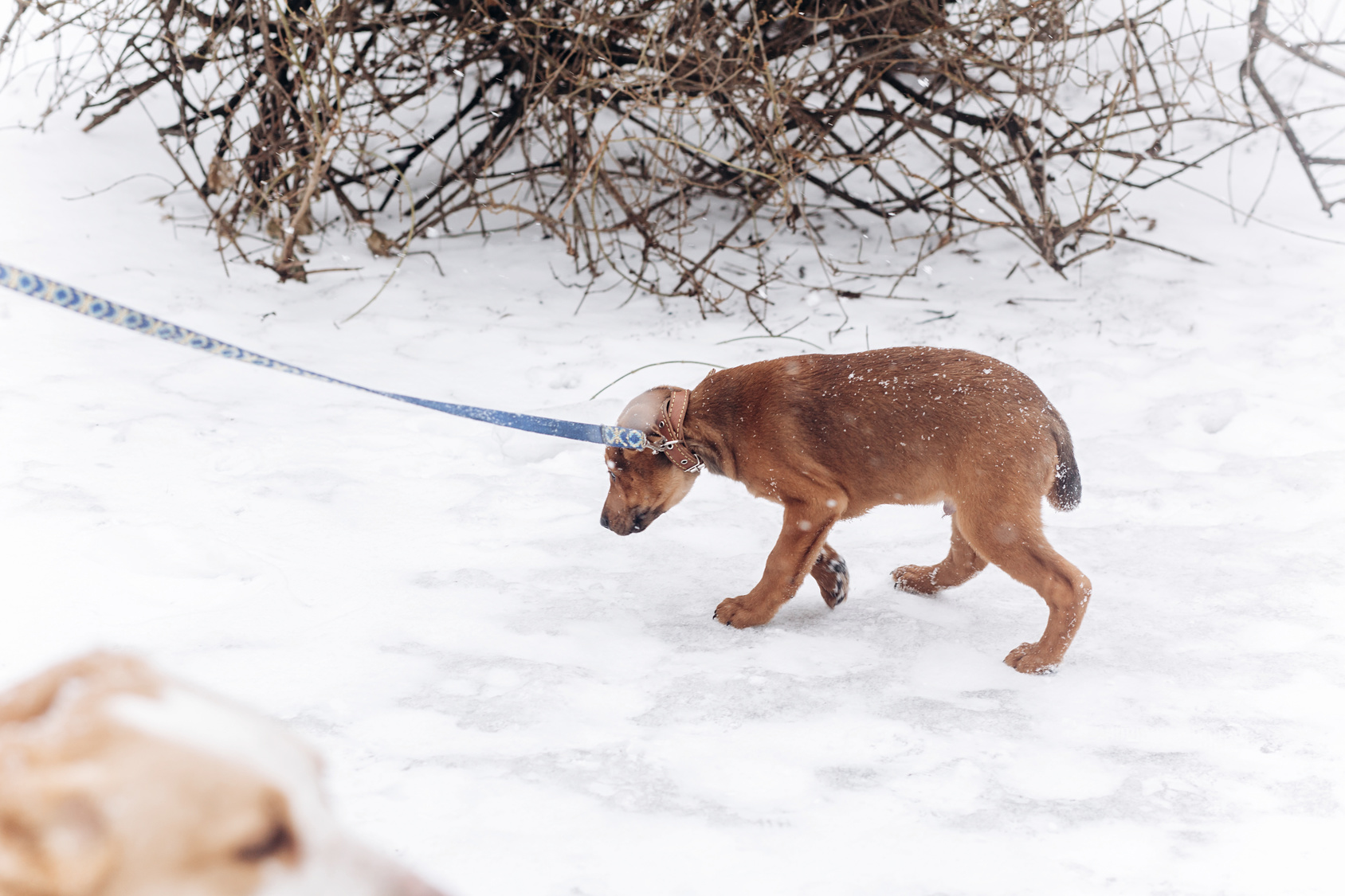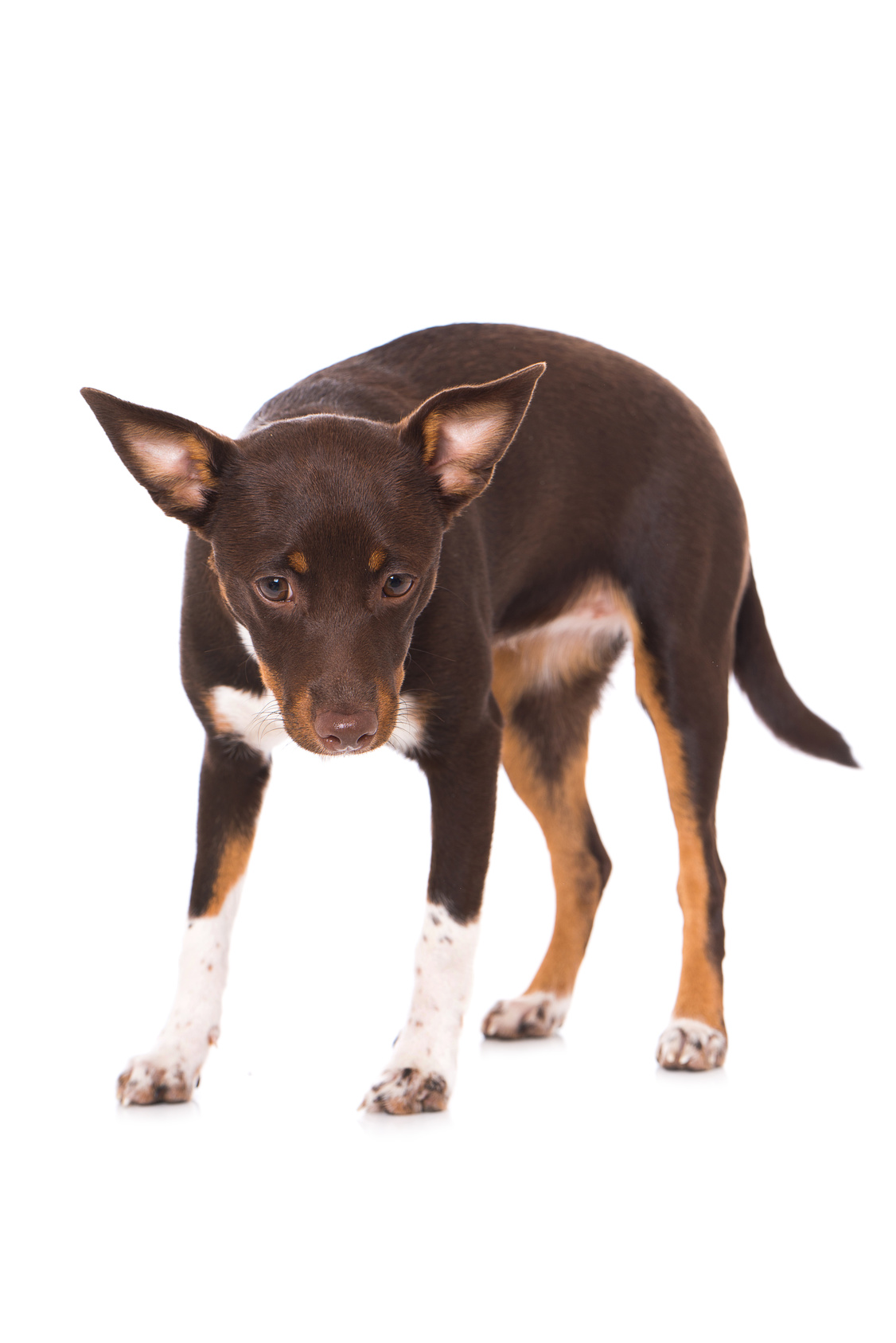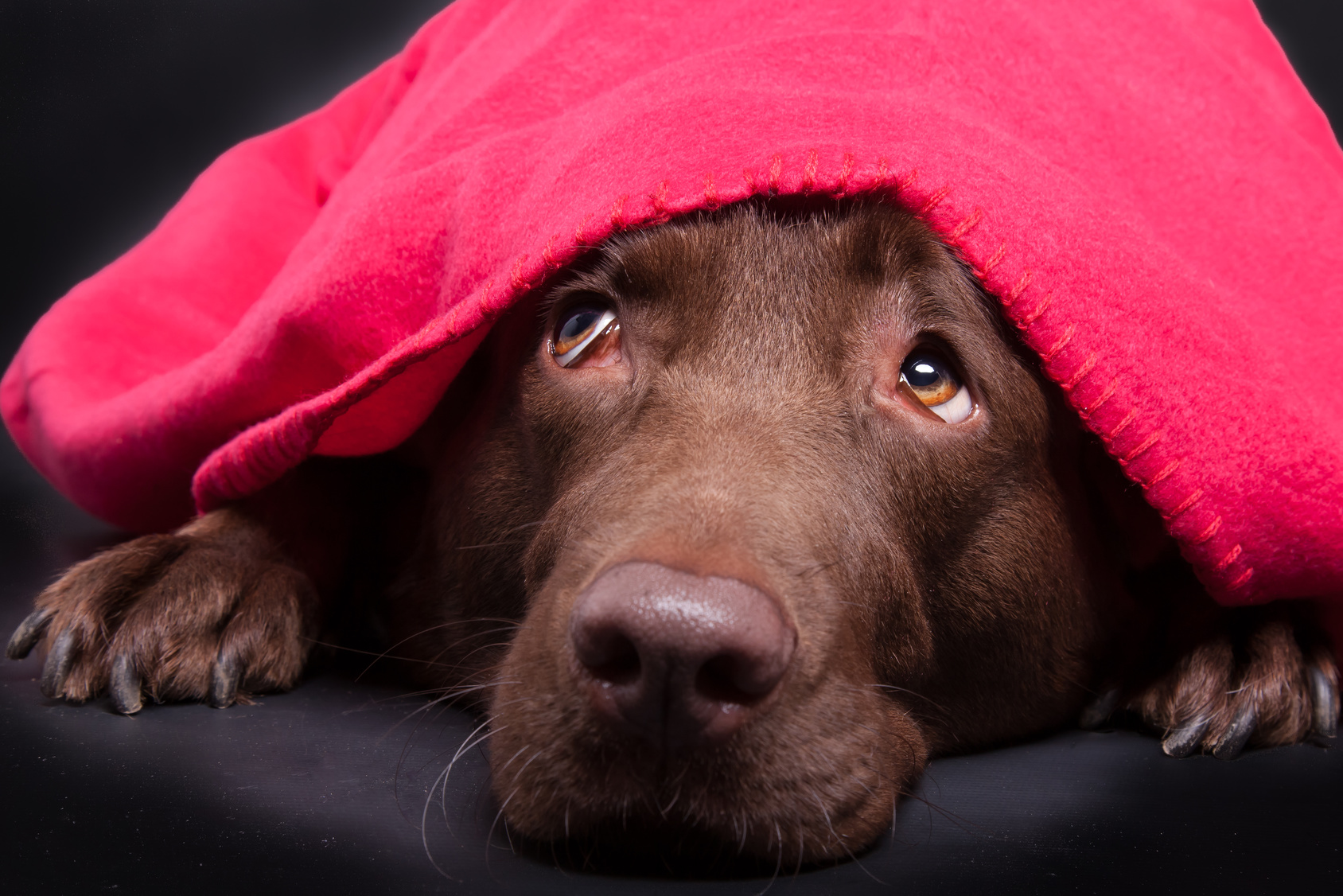Development of Puppies: From Birth to Adulthood
Every puppy goes through several developmental phases until it eventually grows into an adult dog. Learn more what is crucial for the development of puppies into self-assured and serene dogs.
Like with us humans, dogs can be courageous daredevils or fearful followers that are extremely cautious about new things. It can become problematic if a dog is very fearful in day-to-day situations or overreacts: a loud noise, staircase or certain people can fluster dogs out of all proportion. An overly fearful dog doesn't just make daily life complicated, but it is also a big strain for your dog itself. In the following article, we will give you some tips on how to help your dog to become more self-assured.

© Cristina Conti / stock.adobe.com
In order to counteract this at an early stage, it’s helpful to recognise the preliminary stage of fear, which is uncertainty. This comes to the fore, for instance, in the form of a drawn-in tail and wary body language with tense muscles. If this uncertainty increases, the dog ducks, looks away and withdraws its tail even more. Some dogs also start to pant more or even to tremble. Beware that if a fearful dog also feels penned in, it can bite due to the apparent urgency of the situation!
 © sonyachny / stock.adobe.com
© sonyachny / stock.adobe.com
There can be many reasons for dogs being fearful: bad experiences with humans, mistakes in training or disposition. A good foundation for a self-assured dog is a development phase full of different stimuli. If a puppy is acquainted with and experiences a lot of things, it will tend to remain open to new things. You can also train adult dogs with strong self-confidence to have an optimal protective shield. The easy way is to teach it in a calm environment tricks and to offer effusive praise. This gives any dog a good dose of self-confidence in the long run and strengthens the bond between you too.
At the first signs of fear in unfamiliar situations, the main thing is for you to stay calm. If you as the pack leader don’t show any concern, your dog will often notice that the supposed danger can’t be too bad. With dogs that are fearful by nature, it can help to be proactive even with small insecurities and to overcome the apparently dangerous situation together. You definitely shouldn’t berate your dog in situations that can trigger anxiety. Even consoling it in a very intense manner can be counterproductive, though this doesn’t mean you should ignore your dog: talk to it encouragingly, but don’t mollycoddle it.
Food or treats can become your allies when it comes to specific triggers of anxiety. Is your dog scared of the noisy mixer? Turn it on in the room next door before the next meal and then give your hungry dog its food.
 © DoraZett / stock.adobe.com
© DoraZett / stock.adobe.com
If you repeat this exercise regularly, your dog won’t just get used to the noise, but will also associate it with a positive experience. However, it’s important that your dog is just a bit insecure and not completely terrified when you serve it its food – start off small. The same principle can be carried forward – just be creative! Take away your dog’s fear of storms by playing a nature CD or listening to storm noises online.
If the trigger of anxiety is visual, also link it to food in a positive way. For instance, place a treat or chew at a proximity to the “unusual” object that your dog will accept when on its lead. Chewing for an extended period is particularly suitable in this case, because fearful dogs then spend longer in relaxation mode. Playing within close proximity can also be reassuring – ideally with a familiar toy, because more new things could prove a further irritant. Venture gradually towards the object of fear – it could take days or weeks to make progress, especially with older dogs, so be patient! It’s also important to always end the exercise on a positive note. If your dog doesn’t dare get any closer to the object in question, stay still with your dog on the lead until it has visibly calmed down. Then give it a treat and move away calmly.
Calming treatments such as Zylkene and Adaptil can also help to take anxiety away.
New Year is a problem for many dogs. It’s difficult to practise for this, but you can take a lot of their fear away through your calm, relaxed example. Ideally spend the evening with your canine campaign and provide a relaxed atmosphere, perhaps distracting it with a toy and some familiar tricks. Don’t give it its food until around midnight so that it is properly hungry and will ideally forget about its fear.
 © Magnus Pomm / stock.adobe.com
© Magnus Pomm / stock.adobe.com
If it is still very agitated, make your presence known but stay calm. Not just at New Year, don’t stare at fearful dogs because such intense observation could unsettle them more.
If you don’t make any progress and your dog remains very fearful in certain situations, it’s worth considering avoiding these stress triggers in future with your canine friend to the extent that this is possible. Alternatively, look for a dog school where you and your dog can look for solutions together.
Every puppy goes through several developmental phases until it eventually grows into an adult dog. Learn more what is crucial for the development of puppies into self-assured and serene dogs.
Some dog lovers are sure that their canine companion understands them perfectly. Nevertheless, there are often misunderstandings between humans and dogs in day-to-day life, because what appears self-explanatory to us isn't always so clear for dogs. What do dogs really understand?
Many dog owners kiss their dogs and cats, so we can only hope that they have brushed their own teeth and their pet's too! But joking aside – cuddling and snuggling with animals isn't just unhygienic in certain cases, but can also be dangerous.